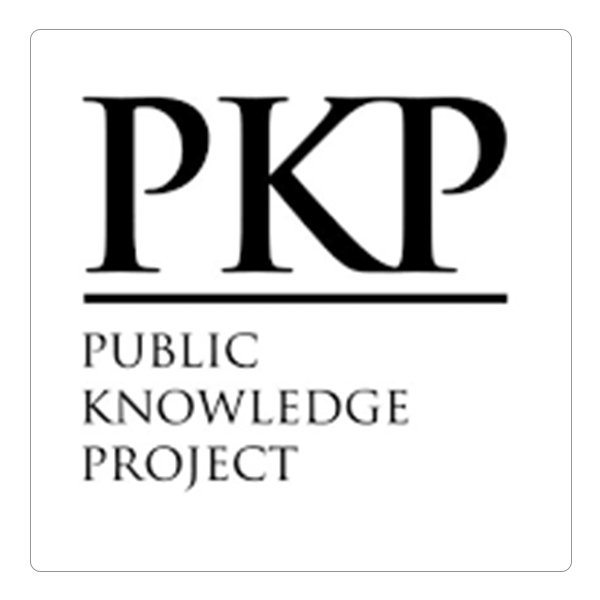Fungal Contamination of Airconditioner Units in Five Hospitals of Erbil Province- Kurdistan Region /Iraq
DOI:
https://doi.org/10.25271/sjuoz.2018.6.4.545Keywords:
fungi, air-conditioner, hospital, asthma, allergyAbstract
During April 2018, 75samples were collected from five hospitals in Erbil city. Samples were taken by sterile cotton swabs from the air dispenser window of air conditioner units (ACU) . They were cultured directly on Sabouraud's dextrose agar incubated at 25oC ±2. The samples were collected from five departments in each hospital include out-patient ward (OP),in-patient ward (IP), emergency room (ER), intensive care unit(ICU), and operation theater (OT). A total of (410) fungal colonies were counted, they belong to13 genera include ten hyphomycetes and only one of zygomycetes ,basidiomycetes , and hemiascomycetes. Penicillium represented in the highest total occurrence (40%) followed by Aspergillus(38.66%) and Alternaria (21.33%). The total frequency showed that Candidawas the highest (30%) followed by Penicillium(27.56%) and Aspergillus(13.17%). The highest density of filamentous fungi (no. of colony/sample) was detected in OP=16.75, and the lowest in OT=1.5. The diversity of isolates showed that ( 9) genera were recorded from ER(60%) and only one in OP (6%). All recorded genera in current study were regarded as indoor air pollutants. The predominant genera Alternaria, Aspergillus, Penicillium ,Cladosporiumand Candida are well-known allergens and may cause several pulmonary disorders as well as fetal infections in particular cases.
Downloads
References
Al-Bader s. M.The fungal airspora at Basrah – Iraq. Basrah. J. sciences , vol.13 , No1, (11-18) (1992).
Al-Bader, S.M., Ahmood, A.A., Majeed M. Al-Hamdani, M.M. 2013. The Relation between Fungi Isolated from Higher Respiratory Tract of Allergic and Asthmatic Patients, and Air Fungi in their Residence 24(2) 1-12.
Aligbe, D.S., Gide Suleiman, G. and Warodi, F.A 2016. Studies on Microorganisms Associated with Air-Conditioned Environments IOSR Journal of Environmental Science. Toxicology and Food Technology (IOSR JESTFT), 10(7)2319-2402.
Allergy, A.1987. Chronic asthma and rhinitis due to Candida albicans, Epidermophyton, and Trichophyton. 59(1):48-51.
Arnow, P.M., Andersen, R.L., et al 1978. Pulmonary Aspergillosis during Hospital Renovation. American Review of Respiratory Disease, 118.1.49.
Awosika, S., Olajubu, F. and Amusa, N. 2012. Microbiological assessment of indoor air of a teaching hospital in Nigeria, Asian pacific journal of tropical biomedicine, 2(6): 465–468.
Cabral, J.P.S., 2010. Can we use indoor fungi as bioindicators of indoor air quality? Historical perspectives and open questions. Science of the total environment 408 (20), 4285–4295.
Caggiano, G. Napoli, C., et al. 2014. Mold contamination in a controlled hospital environment: a 3-year surveillance in southern Italy. BMC Infectious Diseases, 14:595.
CDC-Hospitalized Patients and Fungal Infections.
Claudia Ross, C. de Menezes, J.R., et al. 2004. Studies on Fungal and Bacterial Population of Airconditioned Environments. Brazilian Archives of Biology and Technology, 47(5)827-835.
Curtis L, Liberman A, Stark M, Veter M. 2004. Adverse Health Effects of Indoor Molds. Journal of Nutritional & Environmental Medicine, 14(3), 261–274.
De Hoog, G.S., Guarro, J., et al. 2000. Atlas of Clinical Fungi. Centraalbureau voor Schimmelcultures, Utrecht, The Netherlands. doi: 10.17116/terarkh201587353-58
Domsch, K.H., Gams, W., and Anderson, T.H. 1980." Compendium of Soil Fungi". Academic Press, London, (1)859.
Gniadek, A. and Macura, A.B. 2011. Air-conditioning vs. presence of pathogenic fungi in hospital operating theatre environment. Wiadomooeci Parazytologiczne 257(2), 103–106.
Gniadek, A. and Macura, A.B. 2011. Polish Parasitological Society Air-conditioning vs. presence of pathogenic fungi in hospital operating theatre environment 57(2), 103 –106.
GRBIĆ, M.L., VUKOJEVIĆ, J., et al 2008. Fungal Colonization of Air-Conditioning System. 60 (2), 201-206.
Hasanin S M, Fatima K, Al-Frayh, Al-Sedairy S T,2005.Oneyear pollen and spore calendars of Saudi Arabia Al-khobar, Abha and Hofuf. Airobiology 21(3): 241-7.
Juan F Fernandez, Diego J Maselli, Tamara Simpson, and Marcos I Restrepo, Pulmonary Mucormycosis: What is the best strategy for therapy? Respir Care.; 58(5): 60–63.
Kelkar, U. Kulkarni, S. 2011. Contaminated air conditioners as potential source for contaminating operation theatre environment. International journal of infection control. 8: 45-8.
Kelkar, U., Bal, A.M., and Kulkarni, S., 2005. Fungal contamination of air conditioning units in operating theatres in India .Journal of Hospital Infection, 60, 81–84.
Khan AA Haleem, Mohan S. Karuppayil.2012. Fungal pollution of indoor environments and its management. Saudi journal of biological science.19:405-425.
Khan, A.A.H.,and Karuppayil, S.M., 2011. Practices contributing to biotic pollution in Airconditioned indoor environments. Aerobiologia 27, 85–89.
Klich, M.A. 2006. Identification of clinically relevant aspergilli. Med. Mycol, 44,127-131.
Kurup, V.P., Der Shen, H. and Banerjee, B. 2000. Respiratory fungal allerg. Microbes and Infection 2(9):1101-1110.
Menezes E A, Gambale W, Macedo M S, Castro F, Paula C R and Croce J.1998. J.Investig. Allergol. Clin. Immunol.8(4):214-8.
Mosayebi a, M., Eslamirad a, Z., et al 2017. Evaluating of fungal contamination in hospital wet cooling systems in Markazi province, Central Iran 27(3)334-338.
Nancy I.Castillo ,MaríaIbáñez Eduardo Beltrán Jhon Rivera-Monroy Juan CamiloOchoa MónicaPáezCastillo Martha L.Posada-Buitrago Michael Sulyok FélixHernández. 2016. Identification of mycotoxins by UHPLC–QTOF MS in airborne fungi and fungi isolated from industrial paper and antique documents from the Archive of Bogotá.
Pati, P. 2018. Review on Common Microbiological Contamination Found in Hospital Air. Journal of Microbiology and Pathology, 2(1): 103.
Perdelli, F., Cristina, M.L. et al. 2006. Fungal Contamination in Hospital Environments. Infection Control and Hospital Epidemiology, 27, 44-47.
Perdomo H , D. A. Sutton , D. García , A. W. Fothergill , J. Cano ,J. Gené, R. C. Summerbell, M Rinaldi and J. Guarro. 2011. Spectrum of Clinically Relevant Acremonium Species in the United States Journal of clinical microbiology - vol. 49 . 1.243-256.
Polizzi, V., Adams, A., Picco, A.M., Adriaens, E., Lenoir, J., Van Peteghem, C., De Saeger, De Kimpe, N., 2011.Influence of environmental conditions on production of volatiles by Tricho - derma atroviride in relation with sick building syndrome. Building and Environment 46, 945–954.
Ramddn A.Ramadan and Nadhira S. Salih(2010).Isolation and identification of airborne fungi and their relation to allergic diseases in Sulaimania city. MSc thesis 109.
Rossana A Cordeirol, Raimunda S N, Brilhantel, Lydia D M Pantoga,Renato,E Moriera Filho et at. 2010. Isolation of pathogenic yeast in the air from hospital environment in the city of Fortaleza ,Northeast Barazil. Baraz.J.Infec.Dis. 14(1), 30-34.
Samson, R.A., Uztan, A.H., et al. 2017. Indoor airborne fungal pollution in newborn units in Turkey. Environmental Monitoring and Assessment, 189:362.
Sara, H.D., Tereza, Z.M., et al. 2001. Clinical Importance of Alternaria Exposure in Children. American journal of respiratory and critical medicine, 164, 3.
Strelyaeva AV, Svistunov AA, Dzhomaa RA, Sapozhnikov SA, et al.2015. Pulmonary paecilomycosis: Diagnosis and treatment. Ter Arkh. ;87(3):53-58
Teresa E Twaroch, Mirela Curin,1 Rudolf Valenta,Ines Swoboda.2015. Mold Allergens in Respiratory Allergy: From Structure to Therapy Allergy Asthma Immunol Res.;7(3):205-220.
Visagie, C.M., Houbraken, J. 2014. Identification and nomenclature of the genus Penicillium. Study in Mycology, 78: 343–371.
Wang, Y I, Lu,G., Ma, R. and Chai T.2007. Biodiversity and concentration of airborne fungi in chicken house. ISAH -2007,Tartu,Esonia. 564-569. www.cdc.gov/fungal/infections/hospitalized.html
Yau, Y.H., Chandrasegaran, D., and Badarudin, A., 2011. The ventilation of multiple-bed hospital wards in the tropics: a review. Building and Environment 46 (5), 1125–1132.
Downloads
Published
How to Cite
Issue
Section
License
Copyright (c) 2018 Salah M. Al-Bader, Layla Q. Ismael, Asaad A. Ahmood

This work is licensed under a Creative Commons Attribution 4.0 International License.
Authors who publish with this journal agree to the following terms:
- Authors retain copyright and grant the journal right of first publication with the work simultaneously licensed under a Creative Commons Attribution License [CC BY-NC-SA 4.0] that allows others to share the work with an acknowledgment of the work's authorship and initial publication in this journal.
- Authors are able to enter into separate, additional contractual arrangements for the non-exclusive distribution of the journal's published version of the work, with an acknowledgment of its initial publication in this journal.
- Authors are permitted and encouraged to post their work online.









